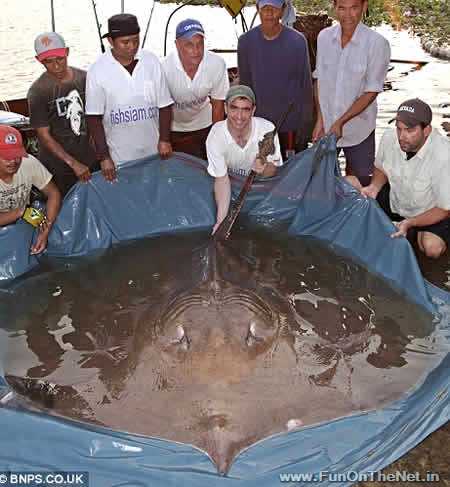Concern that the world could be on the brink of the first influenza pandemic in more than 40 years escalated Sunday as France, Hong Kong, New Zealand and Spain reported potential new cases in which people had been infected with swine flu and Canada confirmed several new cases. In the U.S., where 20 such infections have been confirmed, federal health officials declared a public-health emergency and are preparing to distribute to state and local agenciesa quarter of the country's 50 million-dose stockpile of antiviral drugs. Meanwhile, in hard-hit Mexico, where more than 80 people have died from what is believed to be swine flu, the government closed all public schools and canceled hundreds of public events in Mexico City.
Though the World Health Organization (WHO) is referring to the situation as a "public-health emergency of international concern," the apparent emergence in several countries of an entirely new strain of H1N1 flu virus has led some scientists to believe that it is only a matter of time before the WHO declares pandemic status, a move that could prompt travel bans to infected countries. "We are clearly seeing wide spread," says Michael Osterholm, a pandemic risk expert who runs the University of Minnesota's Center for Infectious Disease Research and Policy. "There is no question." (
Read about the vaccine being prepared in case of a pandemic.)
Health officials in Washington were quick to point out Sunday that none of the 20 cases identified in the U.S. so far has been fatal; all but one of the victims has recovered without needing to be hospitalized. Officials also noted that only one American has been infected so far who had not recently traveled to Mexico - a woman in Kansas got sick after her husband returned from a business trip in that country, where he became ill - but that could change as more intensive disease surveillance begins. "As we continue to look for more cases, I expect we're going to find them," said acting Centers for Disease Control (CDC) director Richard Besser.
In the U.S., where cases have also been found in California, Texas, and New York City, the declaration of a public-health emergency is part of what federal officials termed an "aggressive response" to the outbreaks. In addition to releasing from the national stockpile some 12.5 million doses of the antiviral drugs Tamiflu and Relenza - which scientists say has so far been effective against the H1N1 swine flu virus - the Department of Homeland Security will begin "passive surveillance" to screen people entering the U.S. Any traveler coming from a country with a confirmed human swine flu infection will be questioned, checked for symptoms and potentially isolated if they are found ill. Though the CDC has issued public warnings about the more serious outbreak in Mexico, there are no recommendations from Washington against traveling to the neighboring country.
That is in contrast to the more extreme actions of some other governments, including Hong Kong, where officials on Sunday urged residents to avoid going to Mexico. Hong Kong officials also ordered the immediate detention in a hospital of anyone who arrives with a fever above 100.4 F, respiratory symptoms and a history of traveling over the past seven days to a city with a confirmed case of swine flu infection.
But Washington officials Sunday did their best not to overstate the situation and emphasized that their response wasn't out of the ordinary. "I wish we could call it declaration of emergency preparedness, because that's really what it is in this context," said Secretary of Homeland Security Janet Napolitano. "We're preparing in an environment where we really don't know ultimately what the size or seriousness of this outbreak is going to be."
See the top 10 medical breakthroughs of 2008.See TIME's pictures of the week.Right now health officials around the world are trying to take precautions without inciting panic. Here are just a few of the questions facing them - and ultimately, us as well:
1. Is this a flu pandemic?
The influenza virus is constantly mutating. That's why we can't get full immunity to the flu, the way we can to diseases like chicken pox, because there are multiple strains of the flu virus and they change from year to year. However, even though the virus makes us sick, our immune systems can usually muster enough of a response so that the flu is rarely fatal for healthy people.
But every once in awhile, the virus shifts its genetic structure so much that our immune systems offer no protection whatsoever. (This usually happens when a flu virus found in animals - like the avian flu still circulating in Asia - swaps genes with other viruses in a process called reassortment, and jumps to human beings.) A flu pandemic occurs when a new flu virus emerges for which humans have little or no immunity and then spreads easily from person to person around the world. In the 20th century we had two mild flu pandemics, in 1968 and 1957, and the severe "Spanish flu" pandemic of 1918, which killed an estimated 40 to 50 million people worldwide.
The WHO has the responsibility of declaring when a new flu pandemic is underway, and to simplify the process, the U.N. body has established six pandemic phases. Thanks to H5N1 avian flu, which has killed 257 people since 2003 but doesn't spread very well from one human to another, we're currently at phase 3. If the WHO upgraded that status to phase 4, which is marked by a new virus that begins to pass easily enough from person to person that we can detect community-sized outbreaks, such a move would effectively mean that we've got a pandemic on our hands.
The H1N1 swine flu virus has already been identified as a new virus, with genes from human and avian flus as well as the swine variety. And since it is apparently causing large-scale outbreaks in Mexico, along with separate confirmed cases in the U.S. and Canada and suspected cases in other countries, it would seem that we've already met the criteria for phase 4. But though an emergency committee met on April 25 to evaluate the situation, the WHO hasn't made the pandemic declaration yet. Keiji Fukuda, the WHO's interim assistant director-general for health, security and environment, said on Sunday that its experts "would like a little bit more information and a little bit more time to consider this." The committee is set to meet again by April 28 at the latest.
As health officials have repeatedly emphasized, with good reason, the swine flu situation is evolving rapidly, and more lab tests are needed to ascertain exactly what is going on in Mexico and elsewhere. "We want to make sure we're on solid ground," said Fukuda, a highly respected former CDC official and flu expert.
2. What will happen if this outbreak gets classified as a pandemic?
Moving the world to pandemic phase 4 would be the signal for serious containment actions to be taken on the national and international level. Given that these actions would have major implications for the global economy, not to mention the effects of the public fear that would ensue, there is concern that the WHO may be considering politics along with science. "What the WHO did makes no sense," says Osterholm. "In a potential pandemic, you need to have the WHO be beyond question, and (April 25) was not a good day for them."
Of course, declaring a pandemic isn't a decision that should be taken lightly. For the WHO, phase 4 might trigger an attempt to keep the virus from spreading by instituting strict quarantines and blanketing infected areas with antivirals. But we appear to have missed the opportunity to contain the disease at its source since the virus is already crossing borders with ease. "We cannot stop this at the border," said Anne Schuchat, the CDC's interim director for science and public health. "We don't think that we can quench this in Mexico if it's in many communities now."
See the top 10 medical breakthroughs of 2008.See TIME's pictures of the week.That would leave the WHO and individual countries to fall back on damage control, using antivirals and old-fashioned infection control - like closing schools, limiting public gatherings and even restricting travel - to slow the spread of the virus. But such efforts would likely inflict serious damage on an already faltering global economy - and the truth is, we don't know how well those methods will work.
3. Why have the U.S. cases been so much milder than the ones in Mexico?
This is the question that has health officials from Geneva to Washington puzzled. In Mexico, swine flu has caused severe respiratory disease in a number of patients - and even more worryingly, has killed the sort of young and healthy people who can normally shrug off the flu. (Fueling such concerns is the fact that similar age groups died in unusually high numbers during the 1918 pandemic.) Yet the cases in the U.S. have all been mild and likely wouldn't have even garnered much attention if doctors hadn't begun actively looking for swine flu in recent days. "What we're seeing in this country so far is not anywhere near the severity of what we're hearing about in Mexico," said the CDC's Besser. "We need to understand that."
Some of the difference may be due to the fact that Mexico has apparently been grappling with swine flu for weeks longer than the U.S. As doctors across the U.S. begin checking patients with respiratory symptoms for swine flu, CDC officials expect to see more severe cases in the U.S. as well - and as better epidemiological work is done in Mexico, we'll probably hear about more mild cases there too. Right now, however, the true severity of the H1N1 swine flu virus is still an open question, whose answer could change over time. The 1918 Spanish flu pandemic began with a fairly mild wave of infections in the spring, but the virus returned a few months later in a far more virulent form. That could happen with the current swine flu as well. "It's quite possible for this virus to evolve," said Fukuda. "When viruses evolve, clearly they can become more dangerous to people."
4. How ready is the U.S. - and the world - to respond to a flu pandemic?
In some ways, the world is better prepared for a flu pandemic today than it has ever been. Thanks to concerns over H5N1 avian flu, the WHO, the U.S. and countries around the world have stockpiled millions of doses of antivirals that can help fight swine flu as well as other strains of influenza. The U.S. has a detailed pandemic preparation plan that was drafted under former President George W. Bush. Many other countries have similar plans. SARS and bird flu have given international health officials useful practice runs for dealing with a real pandemic. We can identify new viruses faster than ever before, and we have life-saving technologies - like artificial respirators and antivirals - that weren't available back in 1918. "I believe that the world is much, much better prepared than we have ever been for dealing with this kind of situation," said Fukuda.
At the same time, the very nature of globalization puts us at greater risk. International air travel means that infections can spread very quickly. And while the WHO can prepare a new swine flu vaccine strain in fairly short order, we still use a laborious, decades-old process to manufacture vaccines, meaning it would take months before the pharmaceutical industry could produce its full capacity of doses - and even then, there wouldn't be enough for everyone on the planet. The U.S. could be particularly vulnerable; only one plant, in Stillwater, Penn., makes flu vaccine in America. In a pandemic, that could produce some ugly political debates. "Do you really think the E.U. is going to release pandemic vaccine to the U.S. when its own people need it?" asks Osterholm.
See the top 10 medical breakthroughs of 2008.See TIME's pictures of the week.Indeed, the greatest risk from a pandemic might not turn out to be from the swine flu virus itself - especially if it ends up being relatively mild - but what Osterholm calls "collateral damage" if governments respond to the emergency by instituting border controls and disrupting world trade. Not only would the global recession worsen - a 2008 World Bank report estimated that a severe pandemic could reduce the world's GDP by 4.8% - but we depend on international trade now for countless necessities, from generic medicines to surgical gloves. The just-in-time production systems embraced by companies like Wal-Mart - where inventories are kept as low as possible to cut waste and boost profit - mean that we don't have stockpiles of most things. Supply chains for food, medicines and even the coal that generates half our electricity are easily disruptable, with potentially catastrophic results. Though we'll likely hear calls to close the border with Mexico, Osterholm points out that a key component used in artificial respirators comes from Mexico. "We are more vulnerable to a pandemic now than at any other time over the past 100 years," he says. "We can't depend on ourselves."
5. So how scared should we be?
That depends on whom you ask. Officials at the CDC and the WHO have emphasized that while the swine flu situation is serious, they're responding with an abundance of precautions. Even Osterholm, who has been highly critical of the U.S. government's long-term failures to better prepare for a pandemic, gives the CDC a 9 out of 10 for its response so far. Outside of Mexico, the swine flu hasn't looked too serious yet - unlike during the SARS outbreaks of 2003, when an entirely new virus with no obvious treatment took the world by surprise. In the U.S., the normal flu season is winding down, which should make it easier for public-health officials to pick out swine flu cases from run-of-the-mill respiratory disease. And there are simple things that people can do to protect themselves, like practicing better hygiene (wash hands frequently and cover mouth and nose when sneezing) and staying away from public places or traveling if they feel sick. "There's a role for everyone to play when an outbreak is ongoing," said Besser.
But the truth is that every outbreak is unpredictable, and there's a lot we don't know yet about the new swine flu. There hasn't been a flu pandemic for more than a generation, and there hasn't been a truly virulent pandemic since long before the arrival of mass air transit. We're in terra incognito here. Panic would be counterproductive - especially if it results in knee-jerk reactions like closing international borders, which would only complicate the public-health response. But neither should we downplay our very real vulnerabilities. As Napolitano put it: "This will be a marathon, not a sprint." Be prepared.

































